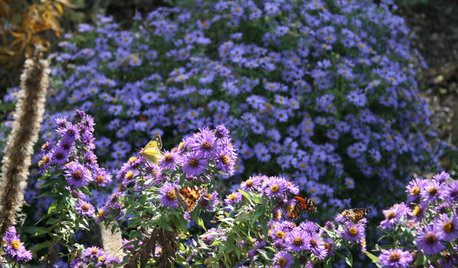General Instructions for Hand-Raising Butterflies & Moths
by Stuart_S
EGGS - Collected eggs should be kept in a very small container.
Fresh host plants or additional moisture are not needed and could
cause mold. Check the eggs often for hatched caterpillars. In
general, eggs hatch in 14 days or less. If you need to delay egg
hatching, you can place them in your refrigerator for a few days if
they aren't already near hatching.
CATERPILLARS - Newly hatched caterpillars are very tiny and
should be handled using a toothpick. Many species will eat their
eggshell after hatching and most will begin wandering around.
Hatchlings should be transferred to a small airtight container to limit
wandering, prevent dehydration and keep the host plant leaves from
drying out too fast. If drops of condensation occur, remove the lid
until they evaporate. Host plant leaves can be cut into small strips to
give the caterpillars more edges to chew on. Don't mist hatchlings,
they could drown. Chlorinated water will kill hatchlings in seconds.
Caterpillars normally get all the moisture they need from the leaves
they eat, so additional watering shouldn't be necessary. If your
caterpillars do become dehydrated, lightly misting their leaves with
distilled or rainwater will help.
Nearly all types of caterpillars go through 5 growth stages (called
instars). Hatchlings are considered 1st instar caterpillars. When the
caterpillar is ready to shed it's skin and advance to the next instar, it
will stop feeding and become inactive. It may attach its feet
to a layer of silk and you may notice a new larger head forming
behind the old one. Caterpillars at this time should not be moved
from their anchoring or they will have difficulty shedding and could die
as a result. This inactive period can last up to 2 days.
As the caterpillars get larger, they are in less danger from
dehydration and can be moved to larger ventilated containers. Never place
contained caterpillars in direct sunlight. Avoid overcrowding.
Non-gregarious caterpillars can become cannibalistic if they are too crowded,
especially in later instars. Also avoid mixing caterpillars that are
different sizes. Larger cats will often eat smaller ones.
Keep your caterpillars supplied with fresh food and remove frass daily!
Avoid grocery store-bought host plants (like parsley). They almost
always have pesticides on them that don't wash off. This also
includes 'organic' stores. (Bt is considered an organic pesticide)
When a caterpillar is fully-grown and ready to pupate it will "clear it's
gut". This is usually indicated by runny frass. After this happens the
caterpillar will no longer feed and will begin wandering around looking
for a place to pupate. In some species this is also accompanied by a
color change.
PUPATION - Butterfly caterpillars generally pupate on a branch or
stick, seldom on the host plant. Monarchs and other species that
make hanging chrysalides will often use the underside of the lid of
their container. Most will make a silk button or other structure to
attach to for pupation. Once attached, they will hang inactive for a
day or so and may shrink and discolor before actually pupating.
Moth caterpillars make cocoons in leaves, crevices or on sticks,
depending on the species. Most Sphinx moth cats will burrow
underground and excavate a chamber lined with a small amount of
silk. Sphinx cats will readily pupate in leaf litter or paper towels in
captivity. Sphinx cats severely shrink and discolor before pupation.
Don't mistake them for dead or dying caterpillars.
Over-wintering cocoons and chrysalides are best kept in an unheated
outdoor shelter like a garage. Another option is to store them in the
crisper drawer of your refrigerator. You can mist them with water
occasionally to keep them from dehydrating, but avoid too much
moisture; that can cause mold.
ECLOSION - When a butterfly or moth emerges from its chrysalis or
cocoon, it needs to hang to properly inflate its wings. Be sure it has
something it can climb up or hang onto. Most butterflies will cling to
their empty chrysalis case. Try not to disturb them after eclosion. If
disturbed, they may prematurely eject the fluid used to inflate the
wings and be crippled for life. After the wings are inflated they need
to dry and harden. This usually takes about 6 hours.
A butterfly or moth may be able to fly before then, but will be unable
to go far because the wings will still be too heavy or soft. Before
taking flight, butterflies and moths will eject the excess fluid in their
bodies (called meconium). Place paper toweling under them if they
are above an area you don't want to get stained.
HAND FEEDING - Usually feeding isn't necessary, but in cases of
extended bad weather there may be a need to feed your unreleased
butterflies. In the wild, lack of sunshine and/or cool temperatures
will make butterflies inactive, reducing their need for feeding.
There has been quite a bit of discussion on what sugar/water ratio is
appropriate for butterflies. It has been argued that butterflies require
less sugar than there is in commercial hummingbird nectar mix, but it
has also been argued that hummingbirds and butterflies feed from the
same nectar sources in the wild. The most common formula seems
to be 1 part sugar to 4 parts water. One tablespoon of sugar mixed with
four tablespoons of water is a typical batch. Gatorade has also been
recommended. Soak a small sponge with the liquid or place a few drops
on a tabletop. Avoid large puddles; you don't want the butterfly's
wings to get wet and sticky. Hold the butterfly by the upper wing tips
and unroll the feeding tube with a toothpick, placing the tip in the mix.
Butterflies are surprisingly cooperative once they get a taste and will
often sit and drink unrestrained until they've had their fill.
BREEDING - Butterflies are very difficult to breed in captivity. Your best bet is to release them.
Female silk moths can be left outside overnight in a cage to attract males. The bars should be spaced wide enough to allow mating but close enough to prevent the female from escaping. Females emit a pheromone from a scent gland at the end of the abdomen, usually the first few nights after eclosing. This scent will attract males from miles away. Females rarely fly before mating. This is why females caught at lights are usually fertilized. Always breed moths in open cages and where there is some airflow. Closed containers and aquariums concentrate the phermone released by the females making them difficult for the males to locate. Males navigate by smell and touch, not sight, so a slight breeze is essential. After mating, the female moth can be placed in a brown grocery bag for egg-laying. Since the eggs are attached to surfaces with a strong adhesive, the bag makes it much easier to cut out the eggs later. Females will continue to lay eggs until they are nearly dead. Since silk moths have no mouthparts and don't feed, there is nothing you can do to prolong their lives. Typically silk moths live only about 10 days.
INBREEDING - Inbreeding is not recommended. Inbred silkmoths have been known to produce a higher percentage of unviable eggs and entire broods of inbred caterpillars have been known to die for apparently no other reason. However, if no wild males are available, inbreeding is preferable to not breeding at all. Males that emerge before females can be stored in a refrigerator to prolong their lives until females are available. The recommended temperature is 55 degrees. Colder temperatures can cause behavior changes that will render them incapable of mating.













KC Clark - Zone 2012-6a OH
Related Discussions
Visit to UF's Butterfly Rainforest and Greathouse Butterfly Farm
Q
Raising Imperial Moth cats - help
Q
'Raising' Butterflies
Q
Butterfly & moth caterpillar nests. Which do I need to worry abou
Q